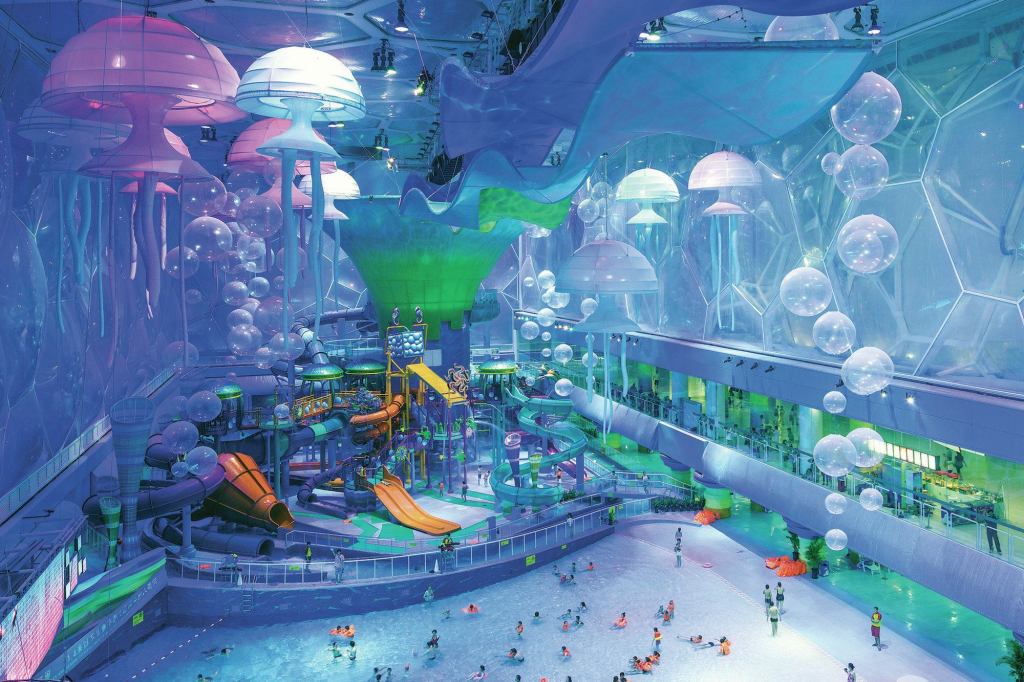Grischa Rueschendorf
Happy Magic Watercube at the Beijing National Aquatics Center | …

Grischa Rueschendorf
Happy Magic Watercube at the Beijing National Aquatics Center | Beijing, China
Grischa Rueschendorf
Happy Magic Watercube at the Beijing National Aquatics Center | …
Designers had a jumping-off point for the aquatic fantasy theme because the space already had a “watery” quality resulting from the bubble-lattice membranes of the roof and exterior walls. This helped with the lighting that was so important in creating the mood. By day, natural light filters through the building’s outer and inner skin, much the way it does through the ocean’s depths. At night, the outer shell glows with an evening light show, and special effects inside the cube create a dramatic, changing underwater world.
The team enhanced this aesthetic with tropical reef forms that were abstracted, enlarged and suspended in the space, so they appeared to float. Stylized coral, jellyfish, bubbles and sea grasses not only reinforce the aesthetic, but the animation and color also punctuate the white geometric backdrop of the building.
A giant television monitor broadcasts real-life action that can be targeted to specific age groups or a broader audience.
Slide towers disguised as plants and coral give guests an unexpected view of the underwater environment. Many visitors have compared the night-time experience of the waterpark to living inside a 3-D movie or computer game.
Large attractions such as this had to fit within an already existing space. Because of the building’s unique wall and roof structure, towers and slides had to be fully contained within the building, unlike most indoor waterparks. Designers had to work with the volume of the space through strategic placement of the rides. For instance, the team designed and placed individual slides so their launch portions correspond with two existing stair towers. They also located slides at the ends of the waterpark. This left plenty of space above the wave pool, inviting as much natural light as possible into that area.
No recommended contents to display.